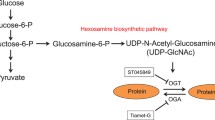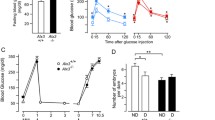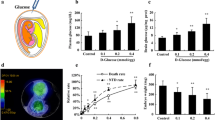Summary
The arachidonic acid cascade leading to prostaglandins has been implicated in diabetic embryopathy. Both arachidonic acid and prostaglandin E2 reverse the teratogenic effects of high glucose concentrations on neural tube development in mouse embryos in culture. Arachidonic acid supplementation also protects against diabetes-induced neural tube defects in vivo. In the present study, prostaglandin E2 was measured directly in embryos from normal and diabetic mice. In normal mice a clear developmental pattern was seen. Prostaglandin E2 levels were high during early formation of the cranial neural folds (day 8), declined during convergence and fusion of the cranial neural folds to form the neural tube (day 9), and were low after neurulation was complete (days 10 and 11). In addition, evidence in this study indicates that embryos have cyclooxygenase activity capable of generating prostaglandin E2 during a brief developmental period preceding neural tube closure. In embryos from mice made diabetic (>13.9 mmol/l glucose) with streptozotocin, prostaglandin E2 levels were significantly lower than normal during early development of the cranial neural folds (day 8), but similar to normal after the cranial neural tube had closed (late day 9 and day 10). The findings suggest that diabetes mellitus, as ascertained by high blood glucose, promotes cranial neural tube malformations by causing a functional deficiency of prostaglandin E2 during early neurulation. Whether the altered PGE2 pattern in the embryo indicates a diabetic effect on the arachidonic acid-prostaglandin cascade in cells of the embryo or in cells of extraembryonic or maternal tissues is uncertain.
Similar content being viewed by others
Abbreviations
- PGE2 :
-
Prostaglandin E2
- PBS:
-
phosphate-buffered saline
- PGHS:
-
prostaglandin H synthase
References
Goldman AS, Baker L, Piddington R, Marx B, Herold R, Egler J (1985) Hyperglycemia-induced teratogenesis is mediated by a functional deficiency of arachidonic acid. Proc Natl Acad Sci USA 82: 8227–8231
Pinter E, Reece EA, Leranth CZ et al. (1986) Arachidonic acid prevents hyperglycemia-associated yolk sac damage and embryopathy. Am J Obstet Gynecol 155: 691–702
Baker L, Piddington R, Goldman A, Egler J, Moehring J (1990) Myoinositol and prostaglandins reverse the glucose inhibition of neural tube fusion in cultured mouse embryos. Diabetologia 33: 593–596
Goto MP, Goldman AS, Uhing MR (1992) PGE2 prevents anomalies induced by hyperglycemia of diabetic serum in mouse embryos. Diabetes 41: 1644–1650
Bradford MM (1976) A rapid and sensitive method for the quantitation of microgram quantities of protein utilizing the principle of protein-dye binding. Anal Biochem 72: 248–254
Morriss-Kay GM (1981) Growth and development pattern in the cranial neural epithelium of rat embryos during neurulation. J Embryol Exp Morph 65 [Suppl]: 225–241
Klein KL, Scott WJ Jr, Clark KE (1981) Measurements of prostaglandins in embryonic tissue using radioimmunoassay. Prostaglandins 22: 623–630
Anton RF, Randall CL, Becker HC (1988) PGE measurement in mouse embryos and uterine/embryo tissue. Prostaglandins 36: 835–846
Pinter E, Reece EA, Ogburn PL et al. (1988) Fatty acid content of yolk sac and embryo in hyperglycemia-induced embryopathy and effect of arachidonic acid supplementation. Am J Obstet Gynecol 159: 1484–1490
Engstrom E, Haglund A, Eriksson UJ (1991) Effects of maternal diabetes or in vitro hyperglycemia on uptake of palmitic and arachidonic acid by rat embryos. Pediatr Res 30: 150–153
Whorton AR, Montgomery ME, Kent RS (1985) Effect of hydrogen peroxide on prostaglandin production and cellular integrity in cultured porcine aortic endothelial cells. J Clin Invest 76: 295–302
Hempel SL, Wessels DA (1994) Prostaglandin E2 synthesis after oxidant stress is dependent on cell glutathione content. Am J Physiol 266 (Cell Physiol 35): C1392-C1399
Eriksson UJ, Borg LAH (1991) Protection by free oxygen radical scavenging enzymes against glucose-induced embryonic malformations in vitro. Diabetologia 34: 325–331
Eriksson UJ, Borg LAH (1993) Diabetes and embryonic malformations: role of substrate-induced free oxygen radical production for dysmorphogenesis in cultured rat embryos. Diabetes 42: 411–419
Eriksson UJ (1994) The antioxidants Trolox and N-acetyl-cysteine protect rat embryos from the teratogenic effects of a diabetic environment in vitro. Diabetes 43 [Suppl 1]: 136 A (Abstract)
Author information
Authors and Affiliations
Rights and permissions
About this article
Cite this article
Piddington, R., Joyce, J., Dhanasekaran, P. et al. Diabetes mellitus affects prostaglandin E2 levels in mouse embryos during neurulation. Diabetologia 39, 915–920 (1996). https://doi.org/10.1007/BF00403910
Received:
Revised:
Issue Date:
DOI: https://doi.org/10.1007/BF00403910




